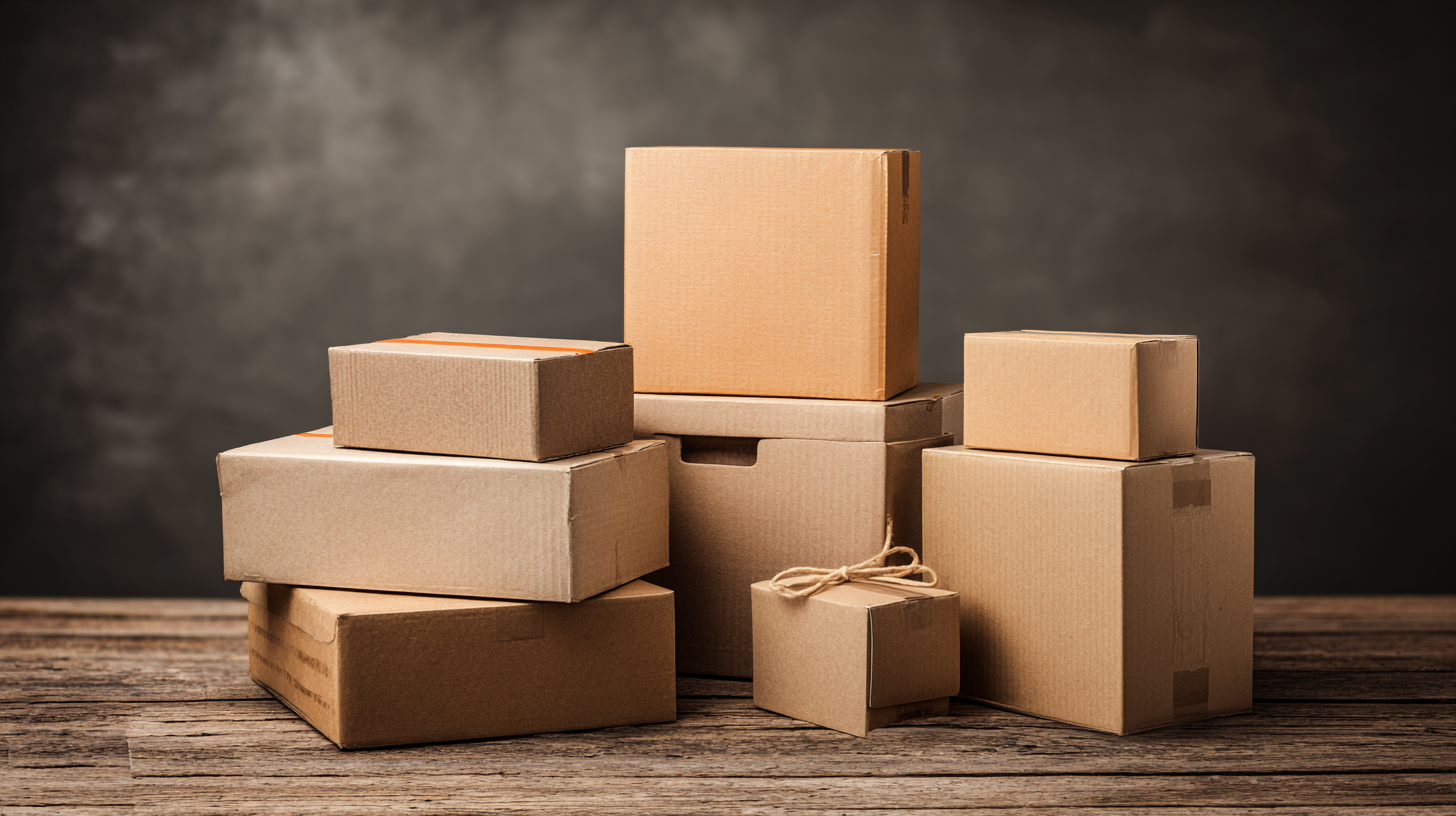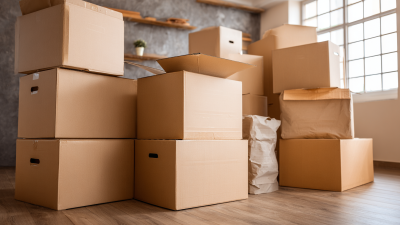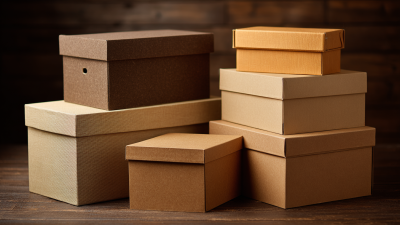The Ultimate Guide to Choosing the Right Packing Boxes for Every Occasion
Packing boxes are an essential component of any moving or storage project, providing not only protection for your belongings but also ensuring organization and efficiency throughout the process. Whether you're relocating to a new home, preparing for a big event, or simply looking to declutter, the right packing boxes can make all the difference. This ultimate guide explores various types of packing boxes suitable for every occasion, empowering readers to make informed choices that cater to their specific needs.
In this guide, we will delve into the key factors to consider when selecting packing boxes, including size, material, and design. With a plethora of options available, it’s crucial to understand which types of boxes work best for different items and circumstances. From sturdy corrugated boxes for heavy items to specialty boxes for fragile goods, we’ll provide tips that can help you select the perfect packing solutions. Ultimately, our aim is to simplify your packing experience while ensuring that your possessions are safe and secure.

Understanding Different Types of Packing Boxes for Various Needs
When choosing the right packing boxes for various needs, understanding the different types available is crucial. Here are seven common types of packing boxes: corrugated boxes, shipping boxes, specialty boxes, flat boxes, moving boxes, padded mailers, and gift boxes. Each type serves a unique purpose; for example, corrugated boxes are ideal for shipping due to their durability, while specialty boxes are designed for specific items like electronics or fragile goods. According to a recent industry report, about 50% of consumers prioritize sustainable packaging, making it essential to choose materials that are recyclable or made from recycled content.

Tips: When selecting packing boxes, consider the weight and fragility of your items. For heavier goods, opt for double-walled corrugated boxes for extra protection. Additionally, ensure you measure your items accurately to avoid any size discrepancies, as shipping carriers have specific dimension requirements that could affect your rates. By using the right type of box tailored to your specific occasion, you can ensure the safety of your items and contribute to a more sustainable packaging solution.
Factors to Consider When Choosing Packing Boxes for Your Occasion
When it comes to selecting packing boxes for various occasions, several key factors must be taken into account to ensure optimal protection and convenience. First and foremost, the size and weight of the items need to be assessed. A report by the Packaging Industry Association notes that using the right box size can reduce damage during transit by up to 40%. This highlights the importance of not only choosing a box that snugly fits your items but also considering the box's weight capacity.
Another critical factor is the material of the packing boxes. Corrugated cardboard is among the most popular choices, known for its strength and lightweight properties. According to a study conducted by the International Corrugated Packaging Foundation, over 80% of Western manufacturers prefer corrugated boxes due to their versatility and recyclability. For heavier or fragile items, consider using double-wall boxes, which can provide additional protection during shipping.
**Tips:** When selecting packing boxes, always opt for ones with cushioning features, like built-in padding or inserts. This ensures a better fit and additional protection. Also, don't forget to label your boxes clearly; using color-coded labels can help you quickly identify contents and priority items during unpacking. Choosing eco-friendly options can also be beneficial, as sustainability practices continue to gain importance in the shipping industry.
Top 5 Recommended Packing Box Styles for Moving and Storage
When it comes to moving or storing your belongings, the type of packing box you choose can significantly impact the safety and organization of your items. The top five recommended packing box styles include the classic corrugated cardboard box, heavy-duty plastic containers, wardrobe boxes, specialty boxes, and flat-packed mailers. Each style serves a unique purpose and ensures your items are well-protected and easy to transport.
Tips for selecting the right box style are essential. For fragile items, opt for corrugated cardboard boxes with dividers to prevent breakage. Heavy-duty plastic containers are perfect for long-term storage as they are durable and pest-resistant. Additionally, wardrobe boxes come with a hanging bar, making it easy to transfer clothes without wrinkling them. Specialty boxes are ideal for irregular items, such as bicycles or artwork, ensuring they fit snugly and are adequately protected during transit or storage.
Always consider the weight and fragility of your belongings when picking a box. Overstuffing boxes can lead to damage, so ensure that each box is appropriate for the items inside. Labeling each box clearly will also streamline the moving process, helping you locate specific items quickly when you reach your destination.
The Ultimate Guide to Choosing the Right Packing Boxes for Every Occasion
Eco-Friendly Packing Box Options for Sustainable Living
When it comes to sustainable living, choosing eco-friendly packing boxes is a crucial step towards reducing waste and making a positive impact on the environment. Traditional packing materials often contribute to landfill overflow and are typically non-biodegradable. However, a variety of eco-friendly options are available that can serve the same purpose without harming the planet. These boxes are often made from recycled materials or are fully compostable, allowing consumers to pack their items while still being mindful of their ecological footprint.

Some popular choices include boxes made from post-consumer recycled cardboard, which not only reduces the demand for new materials but also diverts waste from landfills. Additionally, biodegradable packing boxes made from materials like cornstarch or sugarcane offer a sustainable alternative that breaks down easily after disposal. Opting for these eco-conscious solutions not only exemplifies a commitment to sustainable living but also encourages others to consider how their packaging choices affect the environment. In every packing decision, there is an opportunity to contribute to a greener future while still ensuring the safety and integrity of your items.
Tips for Efficiently Packing Your Boxes for Transport and Safety
When it comes to packing boxes for transport, efficiency and safety are paramount. According to a recent report by the International Warehouse Logistics Association (IWLA), improper packing can lead to a staggering 25% increase in damage rates during transit. To mitigate this risk, it is crucial to choose the right packing materials. Opt for sturdy corrugated boxes that can withstand pressure and weight—boxes with a double-wall construction are recommended for heavier items, as they can support up to 60% more weight than a single-wall box.
Packing techniques also play a vital role in securing items for transport. A study by the Packaging Institute emphasizes that cushioning materials like bubble wrap and packing peanuts can reduce the likelihood of damage by up to 40% when used correctly. Additionally, it's essential to pack heavier items at the bottom and lighter ones on top to maintain stability. Using dividers for fragile items can further enhance safety, ensuring that your belongings arrive at their destination intact and undamaged. By following these tips, you can streamline your packing process and protect your valued goods effectively.

